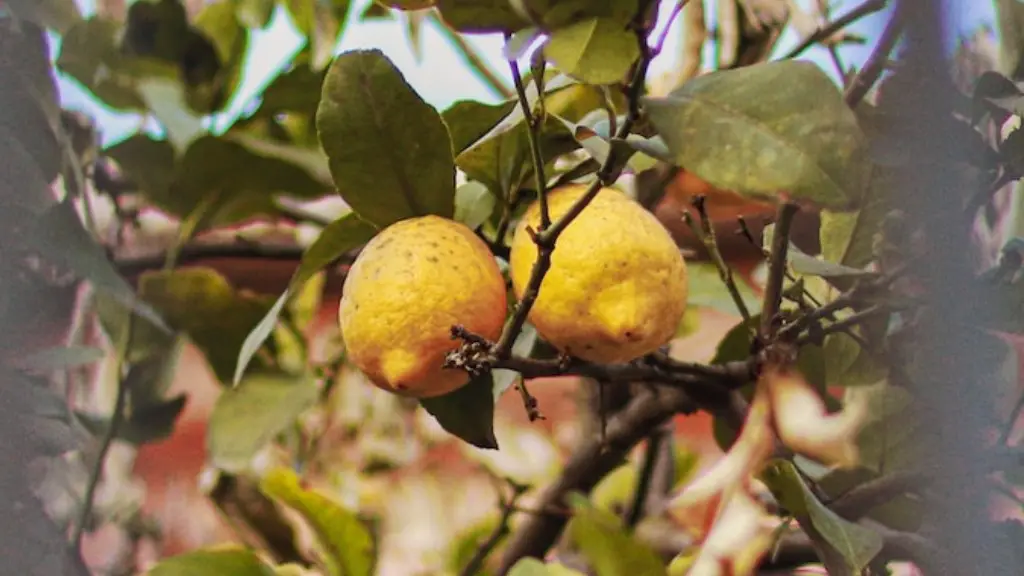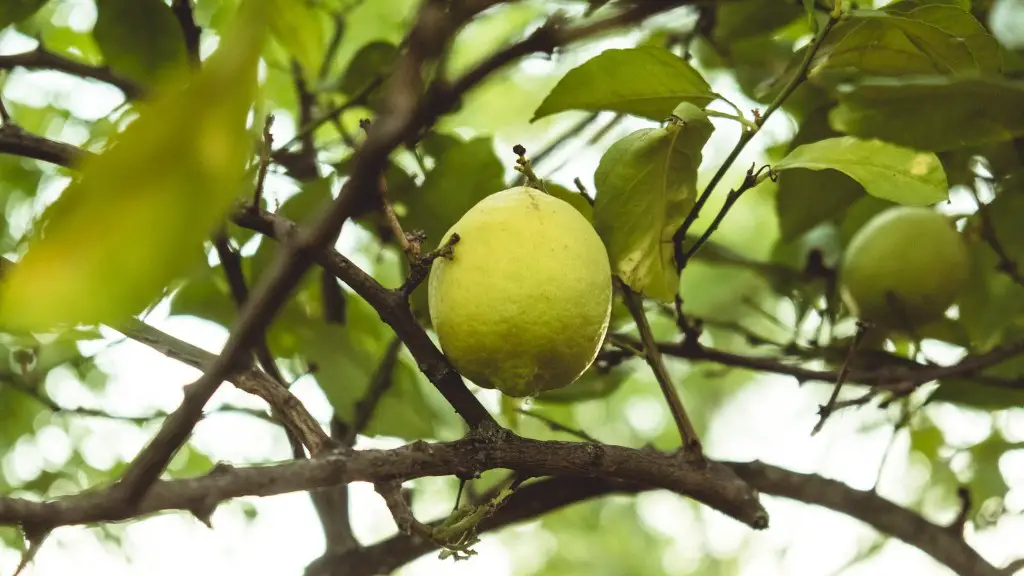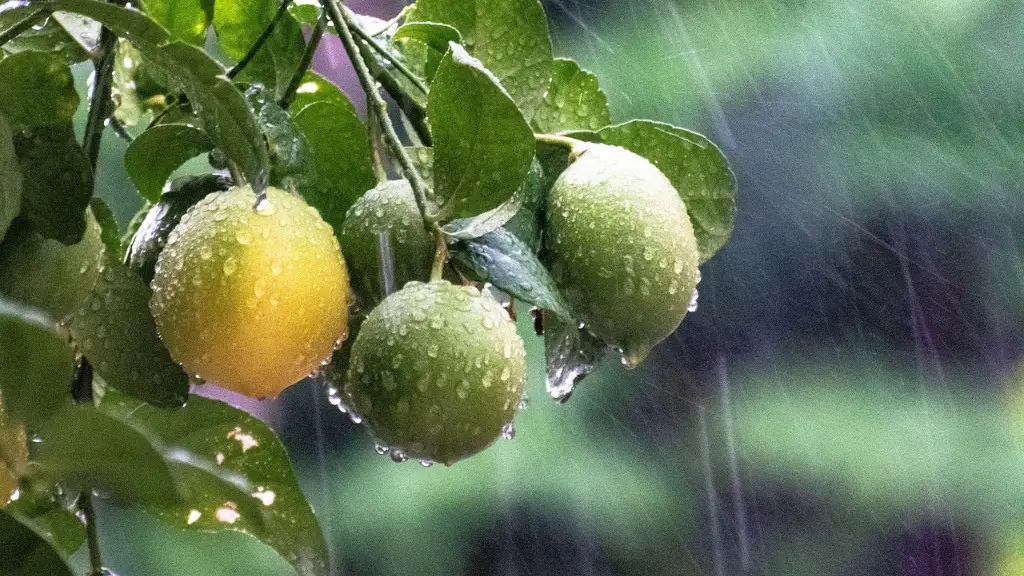Choosing the right container for a Meyer lemon tree is a critical step in effectively growing this delightful and fragrant citrus tree. Meyer lemon trees can grow quickly, and with proper care, will offer abundant yields of both edible fruit and fragrant lemony foliage. It is an important part of gardening to ensure that the Meyer lemon tree is in the right size container and that the container gardening techniques are being properly employed.
Size is the main factor that should be taken into consideration when choosing the right container for a Meyer lemon tree. Meyer lemon trees should be planted in relatively small containers in order to properly control their growth and to take up less space in the garden. Containers with a diameter of 15-20 inches (38-51 cm) and a depth of 18-24 inches (46-61 cm) are ideal for smaller Meyer lemon trees. For larger Meyer lemon trees, select a container that is 24-30 inches (61-76 cm) wide and 18-24 inches (46-61 cm) deep. This ensures that the growth of the Meyer lemon tree is not restricted and the shape and size of the tree can be easily maintained.
The material of the container is also an important factor to consider when selecting a container for the Meyer lemon tree. While plastic and terra cotta containers can work well, ceramic containers are preferred. Ceramic containers offer superior insulation and temperature regulation, meaning that the temperature of the soil in the container can remain consistent even during extreme weather. Furthermore, ceramic containers allow air to pass through the container walls, which is beneficial for the health of the Meyer lemon tree.
When planting the Meyer lemon tree, it is important to use soil that is specifically designed for citrus plants. Potting soil that has a pH between 6.0 and 7.0 is optimal for Meyer lemon trees, as it provides the proper nutrient ratio for proper growth and fruit production. Additionally, the soil should be rich, loose and well-draining to ensure adequate aeration and to ensure that water does not become stagnant in the container. It is also important to keep the soil moist but not wet, as too much water can cause the roots to rot.
It is also important to consider other factors when selecting the right container for a Meyer lemon tree. The container should have at least one drainage hole which will allow excess water to drain out of the container and prevent water from becoming stagnant. Additionally, it is important to ensure that the container is placed in an area that is exposed to full sunlight for 6-8 hours each day. Finally, the container should be placed in a level area to ensure that the tree does not become unstable during windy days.
Factors for Choosing Appropriate Growing Medium for Meyer Lemon Tree
The soil or growing medium used for a Meyer lemon tree must be carefully chosen and monitored to ensure optimal health and growth of the tree. A mixture of soil, compost and sand is ideal, as this will provide the tree with enough nutrients while still allowing for adequate drainage and aeration. A good rule of thumb is to use approximately two parts soil and one part compost, as this will provide the Meyer lemon tree with proper nutrition levels. The soil should also be loamy and well-draining, as overly wet soil can cause root rot and adversely affect the health of the Meyer lemon tree. Finally, it is important to regularly fertilize the soil to ensure that the Meyer lemon tree is receiving enough nutrients to promote healthy growth.
Essential Maintenance and Care for Meyer Lemon Tree
Meyer lemon trees require regular care and maintenance in order to grow and yield abundant yields of tasty fruit and fragrant foliage. This involves watering the tree regularly, as the soil should be kept moist but should not become saturated. Additionally, the plant should be fertilized monthly with citrus-specific fertilizer. This will help to ensure that the tree is receiving the appropriate nutrients for optimal growth and fruiting. The tree should also be pruned regularly to ensure that the shape and size of the tree is maintained and to encourage new growth.
Pest and Disease Management of Meyer Lemon Tree
Meyer lemon trees are prone to several diseases and pests that can adversely affect their health and longevity. Common pests include aphids, scale, spider mites, and mealybugs, among others. It is important to inspect the tree regularly for signs of pests and to promptly address any infestations by using organic methods of control. Common diseases that affect Meyer lemon trees include citrus scab, leaf spot, and citrus canker, among others. It is important to promptly address these diseases by applying organic fungicides and performing other necessary treatments in order to maintain the health of the tree.
Proper Irrigation Techniques for Meyer Lemon Tree
Effective irrigation is an important part of successful Meyer lemon tree care. This involves watering the tree regularly, but not excessively. An effective rule of thumb is to allow the top one to two inches (2.5-5 cm) of the soil to dry out before watering the tree. To determine if the soil is dry, a finger test can be done in which the moisture level can be easily determined. It is also important to water the tree slowly and evenly, as this will ensure that the soil absorbs the water slowly. Finally, it is important to ensure that the container drains properly as any excess water can lead to root rot or other issues.
Benefits of Pruning Meyer Lemon Tree
Regularly pruning a Meyer lemon tree is essential to ensure that it remains healthy and can produce an abundant yield of fruit. Pruning encourages new growth, as it allows for increased air circulation throughout the tree. Additionally, it encourages the development of a strong branch structure, which will help support the weight of the fruit and prevent branches from breaking due to excessive overload. Pruning also helps limit the size of the tree, making it more manageable and easier to maintain. Finally, pruning helps to promote a healthy environment, as it helps to reduce the number of pests and keep them from infesting the tree.


